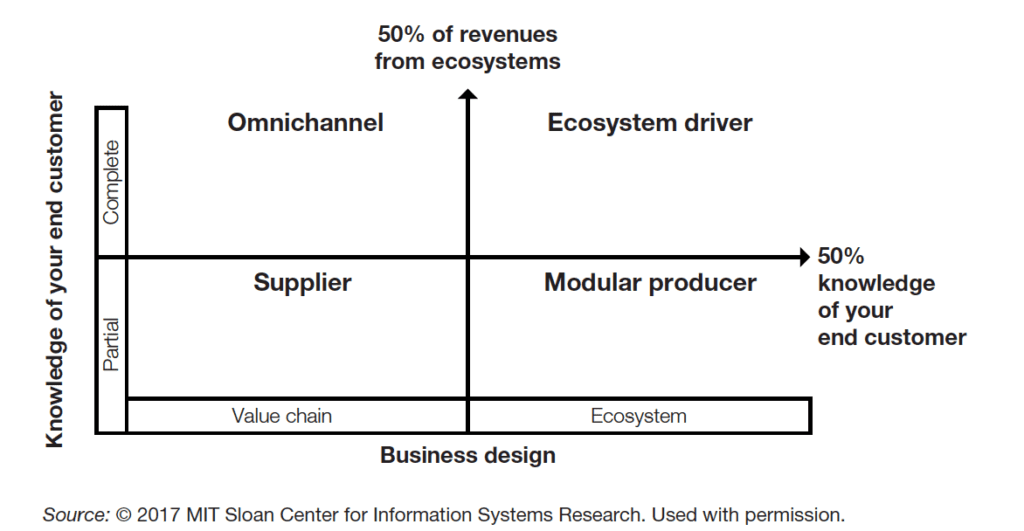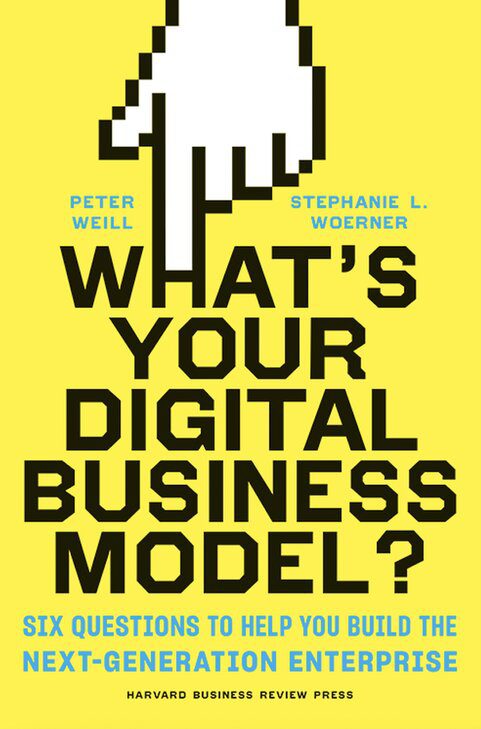Digital transformation is not about technology— it’s about change. And it is not a matter of if , but a question of when and how.
In What’s Your Digital Business Model?: Six Questions to Help You Build the Next-Generation Enterprise, the Chairman of MIT Sloan Center for Information Systems Research, Peter Weill and Research Scientist at MIT Sloan Center for Information Systems Research, Stephanie Woerner provide a framework for building next-generation enterprises in an age of digital disruption.
The authors highlight six questions that every organization should seek to answer in their bid to transform their organization.
The Need for Re-Invention
To thrive in a digitized universe, businesses of all sizes will need to reinvent themselves and substantially change their organizations, including their business models, people, structures, critical competencies, and cultures. In short, your relationship with your customers depends on creating new digital ways for them to interact with your company.
Digital disruption comes in three varieties:
1. New entrants: Startups like Uber and Airbnb— and former born- digital startups like Amazon and WeChat, which have a different business model and superior digital capabilities— enter an existing industry (often those that are complex and diffi cult for customers to navigate) and offer an exciting new value proposition.
2. New business models for traditional competitors: Existing businesses adopt a business model that is more appealing to their customers— like the challenging move Nordstrom made from a traditional department store to an attractive omnichannel business, combining the best of place (tangible, product- based, customer- oriented transactions) and space (intangible, service based, and oriented toward the customer experience). 5 Banking, insurance, retail, and energy companies are all struggling to find that perfect mix of place and space
3. Crossing industry boundaries: Enterprises that are successful in one industry (or customer domain) use digital tactics to move into a new industry or domain. We are seeing this trend in many areas like home ownership— with banks, insurance companies, realtors, and others all vying for this space.
The Digital Business Model (DBM) Framework
The framework helps companies use digital techniques that will help them know more about their customers— be they other businesses (B2B) or the end customers themselves (B2C)— and how to solve these customers’ life-event needs.
The DBM framework) consisting of four distinct business models, each within a quadrant representing different capabilities and varying average financial performance

1. Supplier: producer that sells through other enterprises
2. Omnichannel: integrated value chain that creates multiproduct, multichannel customer experiences to address life events
3. Modular producer: provider of plug-and-play products or services
4. Ecosystem driver: organizer of an ecosystem, a coordinated network of enterprises, devices, and customers to create value for all participants, which is the destination in a particular domain (such as shopping), ensuring great customer service; includes complementary and sometimes competitor products.
The Six Questions of the Digital Business Model (DBM) Framework
Using the DBM framework to foster successful transformation requires that leaders fi rst grapple with six key questions:
1. Threat: How strong is the digital threat to your business model?
2. Model: Which business model is best for your enterprise’s future?
3. Advantage: What is your competitive advantage?
4. Connection: How will you use mobile technologies and the internet of things (IoT) to connect and learn?
5. Capabilities: Are you buying options for the future and preparing for the necessary organizational surgery?
6. Leadership: Do you have the leadership at all levels to make transformation happen?
Every leader needs first to determine the level of threat presented by digitization. Only then will the opportunities become apparent.
What is your Competitive Advantage”
Competitive advantage comes from one (or more) of three sources:
- Content: products and information
- Customer experience: the quality of the interaction between customers and your content, which is influenced by your content’s ease of use and the way it is presented to the customer, often bundled synergistically (i.e., as a multiproduct offering) and across multiple channels
- Platforms: the way your content is delivered to customers through a set of internal digitized processes, data, and infrastructure, as well as external services.
1. What Is the Digital Threat— and Opportunity?
The first question, on digital threat, sets the stage and helps you and your colleagues identify the case for action and the need for change.
Organizational Surgery
If the senior team determines that a large percentage of the company’s revenues is threatened, then the company must act as soon as possible to avoid disruption. Usually that means developing new business models and may entail major organizational surgery, which opens up the opportunity to reinvent the company.
During organizational surgery, clear communication becomes paramount. The CEO and other leaders need to share with the entire enterprise the conclusions from their analysis and the steps ahead— articulating the changes to come in areas such as who makes decisions and any changes in the organizational structure and the company culture. Thus, the enterprise builds the consensus that will be needed for the transformation ahead.
2. Which Business Model Is Best for Your Enterprise’s Future?
The second question prompts you to identify where your enterprise is headed.
An important benefit of identifying your target business model(s) will be that you’ll create a common language among the senior executives and employees about what is possible— and where the enterprise is going on its digital business transformation
3. What Is Your Digital Competitive Advantage?
Take a fairly hard-headed look at how good your company is at each of the three sources of competitive advantage in a digital economy: content, customer, experience, and platforms.
If your company faces a significant threat of disruption, most likely you don’t have a competitive advantage in one of those areas. You will therefore need to decide which area will be your source of competitive advantage, and you’ll create a road map to build and strengthen that advantage.
4. How Will You Connect Using Mobile and the Internet of Things?
Digital technologies come in many forms and will increase in variety and impact over time. Two of the most important are mobile and the internet of things (IoT). Mobile is unprecedented in its ability to allow your company to connect and interact with your customers, anytime and anywhere.
The IoT allows you to develop added services for your customers and gives insights on how they are using your products. These two technologies together create the potential for customers to (automatically) get in touch with you and for you to respond (automatically), all leading to much better services and a deeper understanding of your customer.
Successful enterprises will find ways to use mobile and the IoT to transform themselves. But first you have to integrate mobile and digitally managed assets (i.e, the IoT) into your company’s capabilities.
5. Do You Have the Crucial Capabilities to Reinvent the Enterprise?
Once you have established the need for transformation, figured out how to make money in the future, and identified your source or sources of competitive advantage, you need to start obtaining options (investing) and otherwise preparing for the necessary organizational changes to successfully implement the new business model or models.
6. Do You Have the Leadership to Make Your Transformation Happen?
Leadership is important— no kidding! But it turns out that, in digital business transformation, company leaders have at least two jobs:
(1) focusing the organization on new business models and new sources of competitive advantage and
(2) changing the culture so that the company will not only achieve the targets but also continue to adapt in the next decade and more.



Comments are closed.